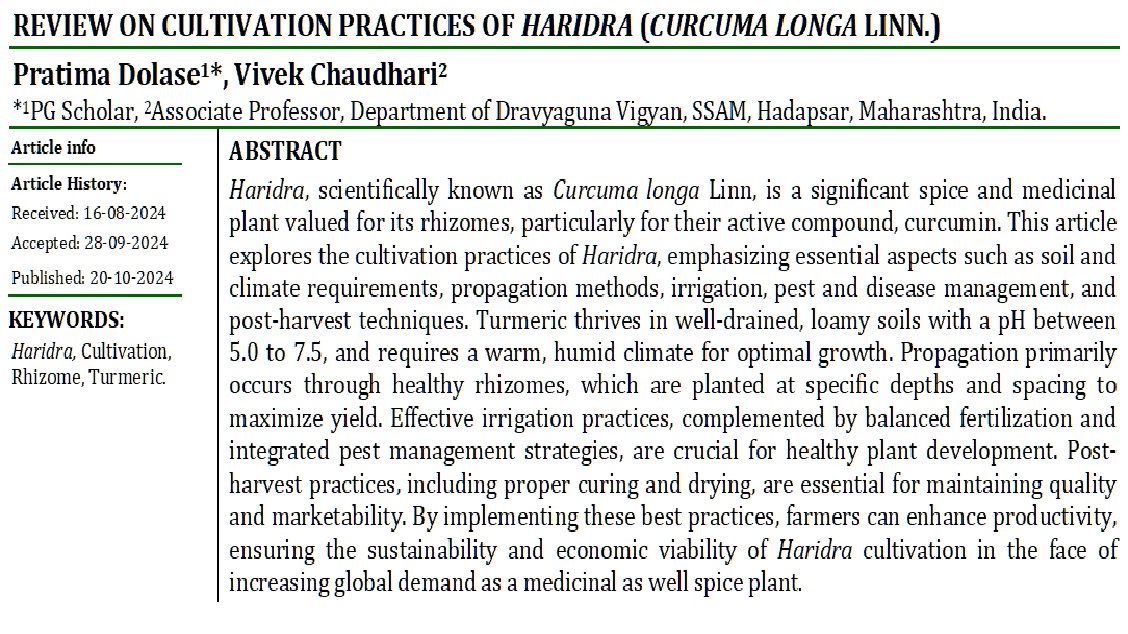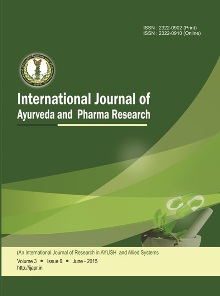Review on Cultivation Practices of Haridra (Curcuma Longa Linn.)
Abstract
Haridra, scientifically known as Curcuma longa Linn, is a significant spice and medicinal plant valued for its rhizomes, particularly for their active compound, curcumin. This article explores the cultivation practices of Haridra, emphasizing essential aspects such as soil and climate requirements, propagation methods, irrigation, pest and disease management, and post-harvest techniques. Turmeric thrives in well-drained, loamy soils with a pH between 5.0 to 7.5, and requires a warm, humid climate for optimal growth. Propagation primarily occurs through healthy rhizomes, which are planted at specific depths and spacing to maximize yield. Effective irrigation practices, complemented by balanced fertilization and integrated pest management strategies, are crucial for healthy plant development. Post-harvest practices, including proper curing and drying, are essential for maintaining quality and marketability. By implementing these best practices, farmers can enhance productivity, ensuring the sustainability and economic viability of Haridra cultivation in the face of increasing global demand as a medicinal as well spice plant.
Downloads

Copyright (c) 2024 International Journal of Ayurveda and Pharma Research

This work is licensed under a Creative Commons Attribution-NonCommercial-ShareAlike 4.0 International License.






